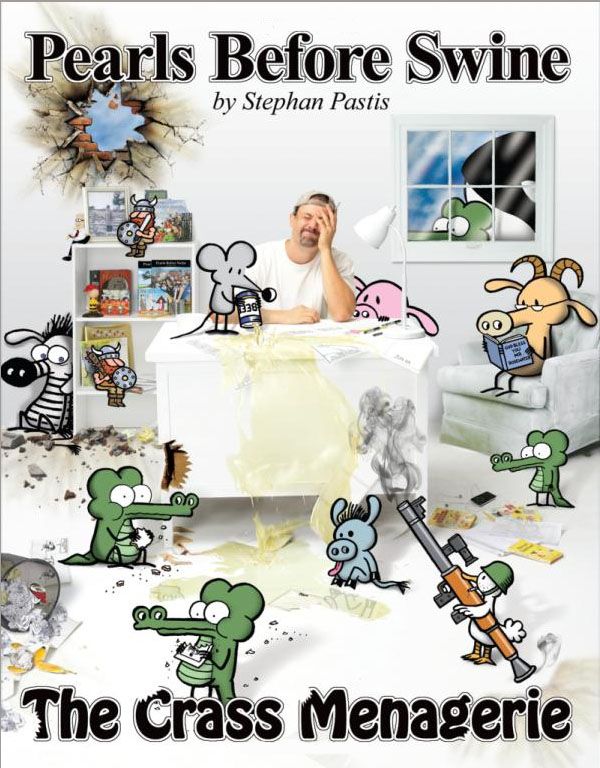Generally speaking, I really hate comic strips these days. The vast majority of them are the same old thing over and over again, recycling jokes from the past 25 years that weren't terribly funny in the first place. ("Cathy" being one of the worst offenders, but hardly alone.) There are some exceptions, though. Patrick McDonnell's "Mutts" never fails to charm me, for instance. "Frazz" by Jef Mallett alternates between funny and pointedly clever. And while Stephen Pastis's "Pearls Before Swine" doesn't tug at my heartstrings, it does regularly make me laugh so hard that I've learned not to drink anything while reading it.
The third treasury-style collection (a big 8.5x11" book), "Pearls Before Swine: The Crass Menagerie" is a fun book for the strips alone. For those who haven't encountered the strip before, it involves a handful of animals living near by each other, from the conniving and self-centered Rat, to the innocent and loving Pig. In my mind, the real stars of the strip have got to be the poor put-upon Zebra, whose next-door neighbors are a bunch of dim-witted crocodiles who are perpetually trying to eat Zebra. Trust me when I say that Wile E. Coyote looks like a super-genius compared to the crocs, whose plans get more ludicrous every time.
Pastis seems to also delight in taking pot-shots (some in good humor, others perhaps not so) at the other comic strips that run in newspapers. A week's worth of strips might involve Rat babysitting the kids from Baby Blues (involving beer bongs, tequila shots, and the son from "Zits" getting run over with a car), or the characters trying to crash the 75th anniversary party for the "Blondie" comic strip (and discovering signs stating "shoot on sight" with their faces underneath).
As an added bonus, though, "Pearls Before Swine: The Crass Menagerie" has some extras for people who have perhaps memorized every single "Pearls Before Swine" strip. There's a commentary from Pastis on a lot of the strips, explaining creative decisions, last-second changes, or noting little details that he's put into the comic. Even strips that I still remembered quite well got a new level of humor thanks to this, and for a hardcore "Pearls Before Swine" fan, this is something that makes the book worth getting. There's also a section at the end featuring 21 strips that either never ran, or did so with large alterations. Here, Pastis explains why the strips either had to be changed or got pulled entirely (including one Sunday strip where he never figured out a punch line), which is a fun little addition that I wish more creators would consider for their own books.
There may be a several-week archive of "Pearls Before Swine" strips officially available online, but a book like this is the sort of thing where you can pull it down from your bookshelf and really enjoy the insanity of Pastis' fevered imagination. Proof, perhaps, that the modern comic strip is not dead. You just need to be a little more selective.

